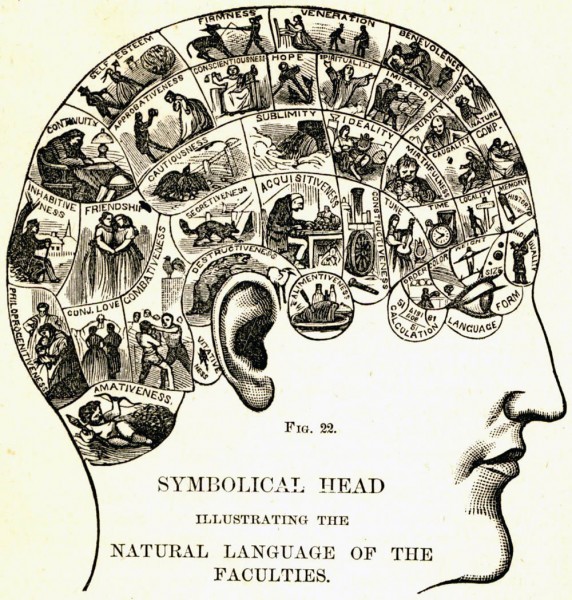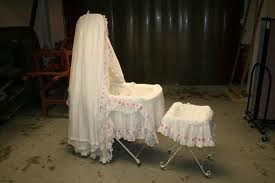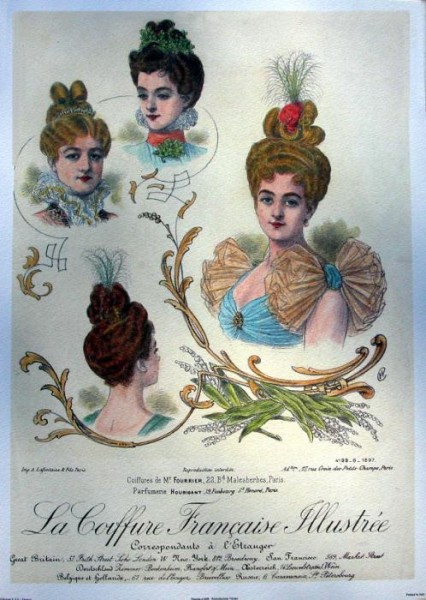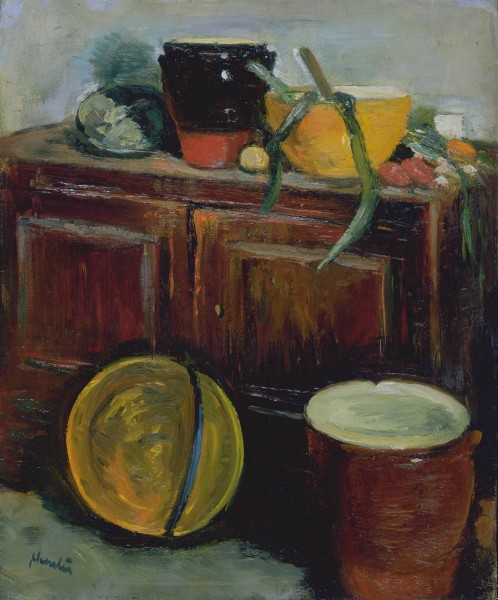
‘
‘Having removed the brains from half a cow’s head …’: Lady Jekyll’s recipes are not for the uninitiated, nor for the faint-hearted.
Under the heading ‘The Woman’s View’, Agnes Jekyll’s Kitchen Essays appeared, unsigned, as a regular Saturday feature in The Times between July 1921 and April 1922. Other, weekday, columns, all unsigned, in the same slot beside the Court Circular, and between Forthcoming Marriages and Obituaries and book reviews, covered interior decoration, fashion, gardening and family questions, and paint a vivid picture of the practicalities of everyday life among the upper and upper-middle classes in post-First World War Britain. They leave us in no doubt as to the target readership. Advertisements offer an inexpensive chiffon-velvet tea gown from Marshall and Snelgrove at 7½ guineas (£260) or a suit from Debenham and Freebody, ‘exceptional value’ at 10½ guineas (£372). An article on the same page tackles the problem of ‘A Girl’s Allowance’: while the mothers economise at Marshall and Snelgrove, their daughters may struggle to get by on an allowance of £100 a year (roughly, £70 a week in today’s money). Their cook might be earning less than £50 a year.
It was surely the cook who would have been removing the brains from the cow’s head, but by 1922 Kitchen Essays with Recipes and their Occasions, as the collected articles were called in their first edition, would have provided not only an entertaining read but a valuable resource. In all but the richest households, a modicum of kitchen knowledge on the part of the employer was becoming a necessity.
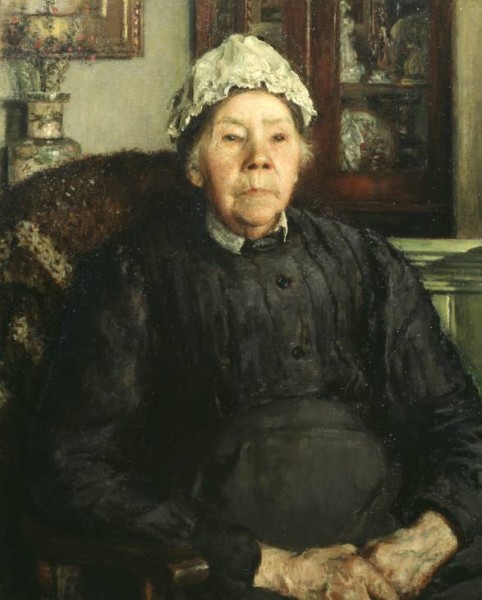
Lady Jekyll writes in her Preface that ‘old-established standards and experiences’ had in many cases disappeared during ‘the recent years of upheaval’, years which had seen a large number of women leave domestic service for war work, only to return to it when the men came back from the Front. In 1921, a third of working women were in domestic service, but changes in life Upstairs had brought changes in life Downstairs and, as Ruth Adam points out in A Woman’s Place (Persephone Book No. 20), after WWI ‘the employer’s kitchen was no longer the cosy refuge from the empty streets which it used to be’. There were fewer servants and fewer still living in. The cook and her kitchen-maid might be the sole occupants, and cooks, once the main prop of the household, were easily enticed away (one is reminded of the cook in Saki’s Reginald, who ‘was a good cook, as cooks go; and as cooks go, she went’).
Nevertheless, even the bachelor is assumed to have a ‘couple’, or a ‘working housekeeper’, capable, after a little practice, of plain cooking, and the hostess, whose cook is temporarily absent, might reasonably hope that the kitchen-maid, with a few ‘stimulating words of hope and faith’ and clear instructions, cut from The Times, will manage well enough while her mistress goes up to dress for dinner.
Only one Essay addresses the problem of entertaining with neither cook nor kitchen maid, for those wh, having been brought down by ‘the vicissitudes of fortune’, are daily learning to solve startling problems of house and kitchen, of garden and farm, in wholly unwonted surroundings, and in thick housemaid’s gloves and strong brogues which have replaced the 16-button Peau de Suedes and the dainty court shoes of their luxurious past, are practising the making of drudgery divine. Unusually in this chapter the recipes are detailed and clear, so that the lately dispossessed hostess may have felt emboldened to turn out afternoon tea of home-made bread, and oatcakes, buttermilk scones and blackberry jelly for her city dwelling guests, lured to the country by the promise of lawn tennis, skating or golf, before putting out her ‘gay but cheap’ dinner ware and ‘bright and unexpected table ornaments’, while slaving to make a success of potage maigre, chicken pilaf, choux à la fermière and bread and butter pudding. For some readers the option, dismissed by the author, of ‘making the clean cut, definitely breaking with the old life of hall and hunting field’ must have seemed quite attractive.
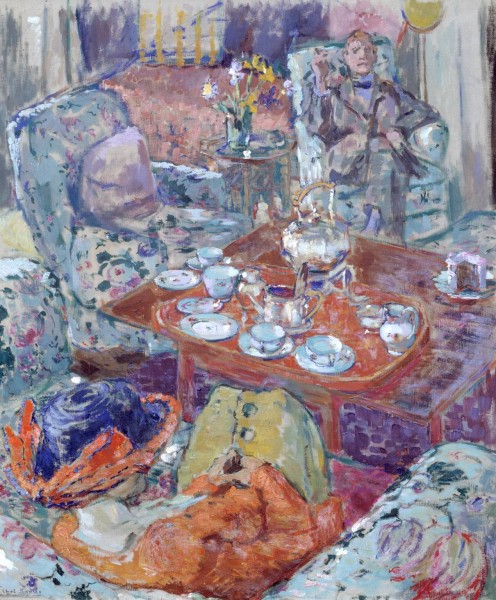
Tea with Sickert by Ethel Sands (1873-1962)
Most of the recipes assume knowledge and skill which even today’s cookless reader lacks. Lists of ingredients are often tantalisingly vague: what weight of vegetables would be deemed ‘abundant’? What is ‘the approved way’ of making jelly, or ‘the usual way’ of preparing stock? What is the temperature of a ‘slack’ oven, a ‘moderate’oven, or sometimes simply ‘the’ oven? But the Essays are a delight, not only because Agnes Jekyll writes with such charm, wit and erudition, but because they open windows onto so many aspects of contemporary life. We are shown into the nursery where children do not behave as well as they used to (plus ça change), into the sick room, enlivened by the cheerful breakfast tray, into the railway sleeper, where a well-packed hamper is preferable to a ‘dark and perilous pilgrimage’ to the crowded restaurant car. We glimpse the holiday cottage where food supplies are less than adequate, and need supplementing with a vast hamper from home containing everything from jam to ham; we meet the country friend up for Christmas Shopping, (‘year by year the propaganda of the shops grows increasingly active’), restored by Oysters au Gratin, followed by loin of veal, and waffles.
With just a little imagination we can see inside the larder. Who would have thought that camembert and gruyère and parmesan were so readily available in 1921, or that garlic would need no explanation, or excuse? Most ingredients were available from Stores (what does the capital ‘S’ imply?), but Italian ‘pastes’ required a journey to Soho, as, one assumes, did Lucca oil (a superior olive oil). Some, presumably, had novelty value, like oven toasted Puffed Wheat as a substitute for expensive salted almonds at the bachelor’s table. Picnics, and what picnics, were wrapped in ‘silver aeroplane waterproof’ (foil?), or American cloth (glazed, waterproof cotton) to keep cool, or placed in hay box to keep warm (remember The Children who Lived in a Barn Persephone Book No 27). Jelly was chilled in an ‘ice-cave’, a crème brulée finished in a ‘salamander’ (a small grill); purées pressed through a hair sieve, the food processor of the 1920s.
Cooking required time, effort and space. What twenty-first century kitchen would have space enough for two ox tongues to lie pickling in a bucket for three to four weeks? How unpleasant to work around it! And one must pity the poor cook staying up to prepare Soufflée of Lobster for the returning theatre goers to enjoy along with Chaudfroid de Volaille and Orange Jelly with caramelised biscuits. Sympathy too for their cold ‘motor men’, waiting outside, who must be grateful for hot Bovril and sandwiches.
Some of the recipes live on. Several, like Black Currant Leaf Ice and Bombe Caramel, can be found in cookery books of the fifties. Others deserve to be revived, so poetic is the language – who could resist Gelée Crême de Menthe made with ‘a handful of those large green peppermint geranium leaves, thick as a fairy’s blanket, soft as a vicuna robe’? While some are best forgotten – the addition of ‘pieces of meat cut in gelatinous squares from the head and indistinguishable from green fat’ to Mock Turtle Soup, on the facing page, is almost stomach turning. Cod’s Head Soup is unlikely to prove popular. Camembert in aspic could be delicious. Super Chocolate Cake made with seven eggs calls to mind the famous River Cafe ‘Death by Chocolate’, except that Agnes Jekyll’s requires the addition of one teaspoonful of sal volatile. Perhaps there is a Persephone reader who knows what that would be for.
Like all the best cookery books before and since, and I think of Constance Spry, and Jane Grigson and Elizabeth David, and, yes, Nigel Slater, Kitchen Essays, is simply a pleasure to read and sits as comfortably on the bedside table as it does on the kitchen table.
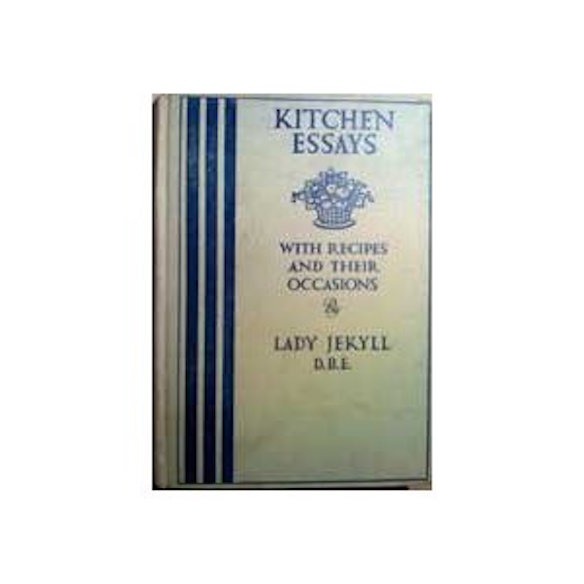
quotes … do share your favourites
‘A grand-father recalls being admonished in his youth against ever showing surprise, or making any comment, even were a roasted elephant to be placed upon the table – a council of perfection, surely, for an unlikely contingency …’
‘The courage and cheerful fortitude so universally shown by all classes and ages of our countrywomen became one of the platitudes of the closing years of the Great War; and although this spirit is no longer publicly acclaimed and beribboned as in the limelight days of National Service, many who have come down in the world are keeping it alive by gallant and uncomplaining toil, sweeping the rooms and cooking the dinner, mothering the family and cheering the breadwinner, within those narrow homes whither the vicissitudes of fortune have driven the dispossessed in yearly increasing numbers.’
‘But at Sunday supper it often matters less what is on the table than what is on the chairs; and if these are fortunately furnished, preceding suggestions could be disregarded, and “a loaf of bread, a jug of wine,” might be found entirely adequate provision.’
If you have enjoyed this book, you might also enjoy:
Good Things in England by Florence White (Persephone Book  No. 10)
Good Food on the Aga by Ambrose Heath (Persephone Book No. 45)
What other bloggers have said about this book:
It offers a nostalgic glimpse into an age of gracious living that has most certainly passed. It is beautifully written, with some quite wonderful turns of phrase. …… I have a mental image of the cook sitting in dread awaiting the mistress’s latest crazy idea taken from The Times, which requires production of something exotic and ‘new’ (“Italians are fond of sweets, but unimaginative in their preparation”) in the absence of what we would consider such an essential as refrigeration (I keep thinking of the Provincial Lady’s problems with cooks here!). bookforgetter
This is a book to savour slowly, like a little box of very expensive chocolates. redroom
It doesn’t matter that the situations she evokes seem so far removed from our current lives — or do they? booksasfood

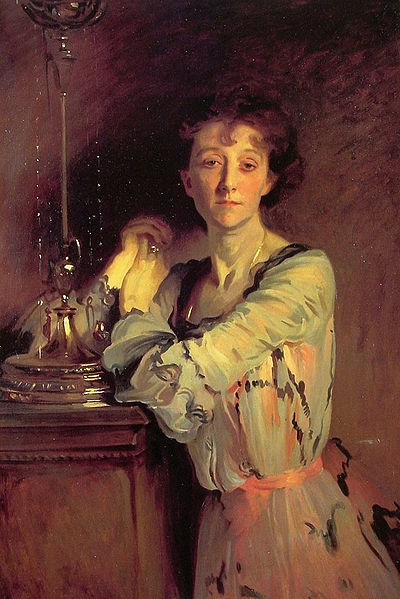
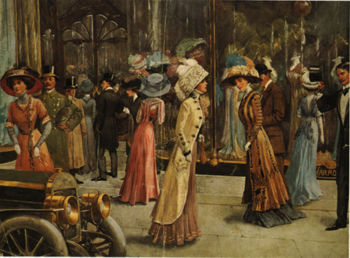
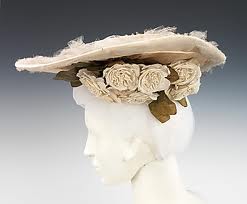
!['The wedding [of Lady Agatha and Sir Bruce Norman] was the most radiant of the year. It was indeed a fairy pageant - of youth and beauty and happiness and hope.' The Walderhurst wedding was 'dignified and distinguished, but not radiant.'](https://persephonebooks.flywheelsites.com/wp-content/uploads/2012/09/victorian-wedding-breakfast-1895_small.jpg)
